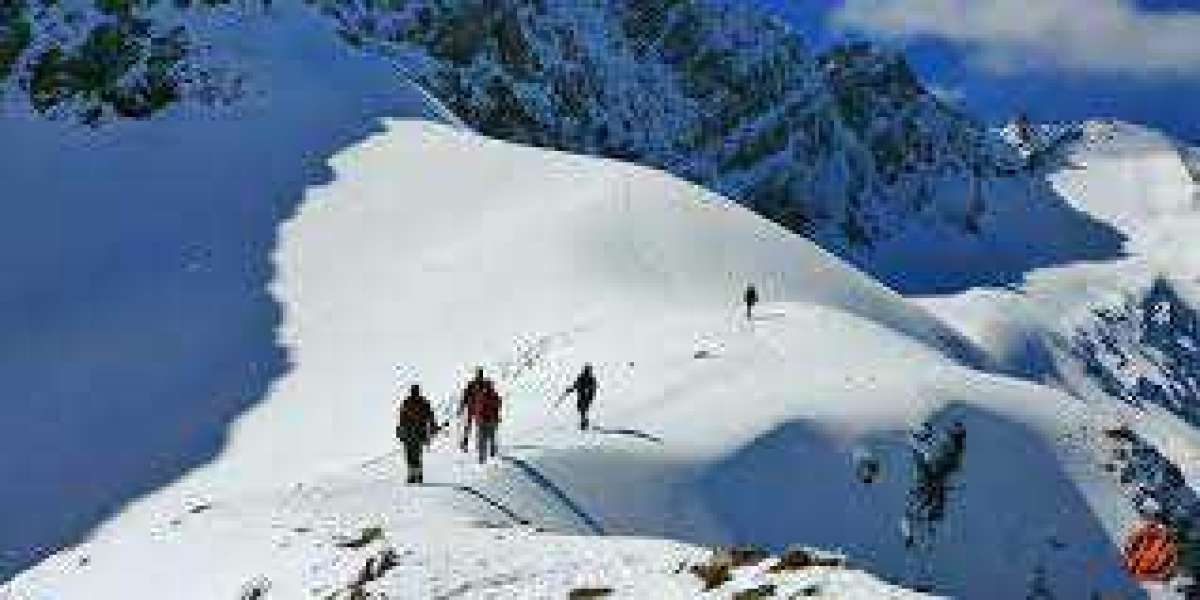Introduction:
Nestled in the picturesque state of Uttarakhand, India, the Nag Tibba Trek is a mesmerizing adventure that takes trekkers through pristine forests, and lush meadows, and to the summit of the Serpent's Peak, offering breathtaking views of the Himalayas. This trek is perfect for both beginners and experienced trekkers, as it combines the thrill of ascending to an altitude of 9,915 feet with the opportunity to soak in the region's rich flora and fauna. Join us on this 1500-word journey as we explore the Nag Tibba Trek, uncovering its natural beauty, cultural significance, and the experiences it offers to those who embark on this unforgettable adventure.
You can also Roopkund trek and it is a legendary and thrilling adventure that takes trekkers to the enigmatic Roopkund Lake, also known as the Skeleton Lake, in the heart of the Indian Himalayas.
I. The Legend of Nag Tibba :
The name "Nag Tibba" translates to "Serpent's Peak" in the local language. The trek derives its name from the legend that this mountain is the abode of the serpent god, and locals often pay their respects to this deity during the trek. This mythological connection adds an aura of mystique to the journey, making it not just a physical challenge but a spiritual one as well.
II. Starting Point: Pantwari Village :
The Nag Tibba Trek typically begins from Pantwari village, a charming hamlet located in the Tehri Garhwal district of Uttarakhand. Trekkers can easily reach Pantwari from Dehradun, which serves as a major transit point. The village is known for its warm hospitality and offers a glimpse into the traditional Garhwali way of life. Before commencing the trek, visitors can explore the local culture and savor authentic Garhwali cuisine.
III. Trekking Route :
The Nag Tibba Trek spans over a distance of approximately 15 kilometers round trip. The path takes you through dense oak and rhododendron forests, which are particularly stunning during spring when the rhododendron blossoms are in full bloom. The initial part of the trek is relatively easy and gradually ascends to the Nag Tibba base camp.
IV. Camping at the Base Camp :
The base camp of Nag Tibba is a serene meadow surrounded by towering trees. Trekkers often choose to camp here, enjoying the tranquility of the location and the starry nights. It's an ideal spot for bonfires and stargazing, creating a magical atmosphere in the midst of nature.
V. Summiting Nag Tibba :
The final push to the summit is a challenging yet rewarding part of the trek. Trekkers ascend through steep, rocky terrain, with each step bringing them closer to the panoramic views that await at the top. Once you reach the summit, the sight of the snow-capped Himalayan peaks like Swargarohini, Bandarpoonch, and Kala Nag will take your breath away. The sense of accomplishment at this moment is unparalleled.
VI. Flora and Fauna :
Nag Tibba is a biodiversity hotspot. The trek offers a chance to spot a variety of flora and fauna, including oak, rhododendron, pine, and deodar trees. Wildlife enthusiasts can also keep an eye out for musk deer, leopards, black bears, and a multitude of bird species.
Vll. Fun in the trek :
- Scenic Views: The trek offers breathtaking vistas at every turn. Whether it's the lush green meadows, dense forests, or the panoramic views of the Himalayan peaks, the scenery is a treat for nature lovers and photography enthusiasts.
- Camping Under the Stars: Spending a night at the base camp, gazing at the star-studded sky, and sitting around a campfire with fellow trekkers is a memorable and fun experience.
- Local Culture: Interacting with the friendly locals in Pantwari village and learning about their way of life can be an enriching and enjoyable cultural experience.
- Group Bonding: Trekking often brings together people from various backgrounds and walks of life. Sharing the challenges and triumphs of the trail with fellow trekkers can lead to lasting friendships and fun camaraderie.
VIII. Best Time to Visit :
The best time to embark on the Nag Tibba Trek is between the months of October and April. During this period, the trek is adorned with a pristine blanket of snow, creating a magical winter wonderland. However, if you prefer milder weather and vibrant rhododendron blooms, spring (April to June) is an excellent time to visit.
Conclusion :
The Nag Tibba Trek is a journey that combines adventure, spirituality, and natural beauty in one unforgettable experience. It's an opportunity to disconnect from the hustle and bustle of daily life and reconnect with the serenity of the Himalayas. Whether you're a seasoned trekker seeking a new challenge or a beginner looking for an introduction to trekking, Nag Tibba has something to offer everyone. So, pack your bags, lace up your hiking boots, and set out on this incredible journey to the Serpent's Peak, where adventure and tranquility await in equal measure.







